The First Truly International Invention: Steam Engine
Powerful and precise Schneider steam hammer
At the 1878 World Expo in Paris, steam engines attracted the most attention. The French company Schneider Iron and Steel Mill showed a huge steam hammer, Creusot. It was 20 meters high and its anvil alone weighed 320 tons. It was the most powerful “blacksmith” in the human history. A power of a blow was 100 tons. It was far more powerful than the steam hammer of the German company Krupp, Fritz, which came the second place with its 50-ton blow.
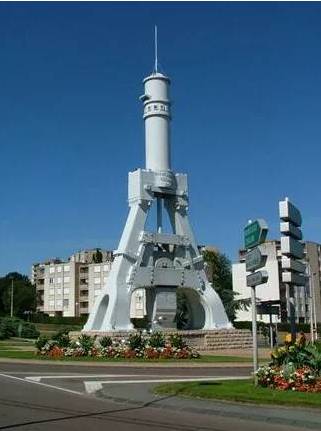
Model of Schneider’s steam hammer at the 1878 World Expo in Paris
The 1878 World Expo in Paris had mainly been stage to divert the painful memory of the Franco-Prussian War. The Third Republic was proving to the world that France was still a leading power. But the steam hammer, which won universal attention and amazement at the Paris World Expo, was only a wooden model.

Deng Xiaoping’s registration card (original copy) of employment at Schneider
The Schneider Iron and Steel Mill, where Deng Xiaoping once worked as a work-study, was located inCreusotbetween Paris and Lyon. Steam hammer was the most important heavy machinery for manufacturing large engine long shafts, piston rods and big barrels. Forging does not only change the shape of a workpiece, but also improve the particle structure and mechanical properties of metal. It is reported that Schneider's steaming hammer Creusot has both super strong power and amazing precision. So to speak, it could break the eggshell without harming the chicken inside. Creusot lost its first place after the American company Bethlehem bought over the patent and built a steam hammer with a 125-ton blow.
Today, this old school product of the Steam Age has become an important tourist attraction for Creusot, France. Interestingly, it looks like the Eiffel Tower with four legs, a waist platform and a straight body, but it was built 11 years before the Eiffel Tower.
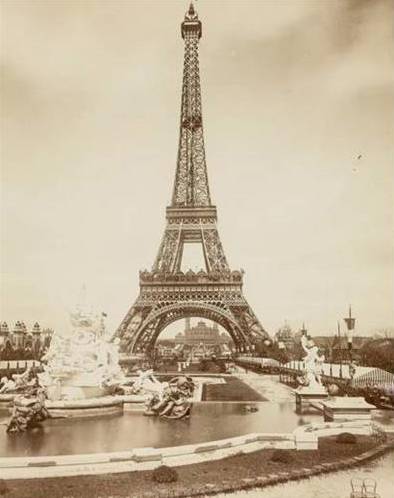
The Eiffel Tower
The skyscraping Eiffel Tower was the most splendid star at the 1889 World Expo in Paris and one of its most glorious legacies. One of the challenges facing this high-rise tower was how to ensure safe and efficient vertical traffic. At that time, elevator was still an infant technology and could not practically help such a large and complex building which was then the world’s tallest.
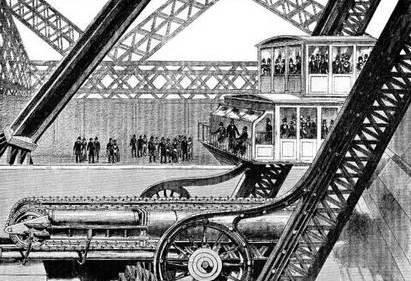
The Eiffel Tower’s elevator and hydraulic press
The Eiffel Tower had 5 hydraulic lifts which were supplied by the American company Otis Audi and a French company, all powered by steam engines. The boiler rooms were built under the South Corner Pier. During the 1889 World Expo in Paris, steam engines had sent more than visitors up the Eiffel Tower.
Modern transport driven by steam engine
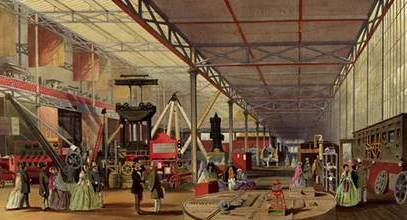
The machinery pavilion
Themeans of transport had been transformed by the invention of steam engine. In 1851 at the first World Expo in London, all kinds of steam ships and marine steam engines were displayed, including the 2:1 model of a luxurious seagoing steamship with a 700-hp Watt propeller engine. Locomotives, which were emerging as an adolescent technology, attracted great curiosity in various shapes. The dividing line between ancient and modern transport rests with the source of power. In fact, millions of exhibits at the Great Exhibition in London had been shipped there by steamers and trains.
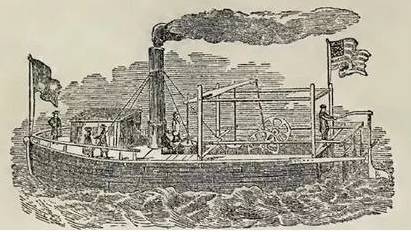
JohnFitch invented the first steam boat in 1788
Water is the natural channel of human traffic on the Earth, and steam engine had been associated with vessels since it was born. In 1788, the American inventor John Fitch launched a boat powered by a steam engine driving several stern-mounted oars. These oars paddled in a manner similar to the motion of a swimming duck's feet. Built in 1807 by the American inventor and entrepreneur Robert Fulton, the North River Steamboat or North River, colloquially known as the Clermont, demonstrated the viability of using steam propulsion for commercial water transportation on the Hudson River between New York City and Albany, New York. The boat was driven by a 24-hp Watt steam engine. The success proclaimed the birth of steamers. The early single cylinder rocker steam turbine and low-pressure boilers were inefficient, so with the continuous improvement of steam engine, compound engines including double-expansion and triple-expansion engines gradually became the standard for steam ships. A compound engine is an engine that has more than one stage for recovering energy from the same working fluid, with the exhaust from the first stage passing through the second stage, and in some cases then on to another subsequent stage or even stages.
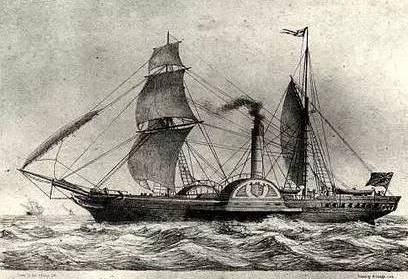
The first transatlantic passenger steamship: the Sirius
One of the major problems with long-distance marine traveling rested with the difficulty of carrying enough fuel. In 1838, SS Sirius left Liverpool on April 4 and arrived in New York eighteen days later after a turbulent crossing. Too little coal was prepared for the crossing, and the crew had to burn cabin furniture in order to complete the voyage. Launched in 1858, the Great Eastern, an iron sailing steamship designed by Isambard Kingdom Brunel, and built by J. Scott Russell & Co., was by far the largest ship ever built at the time of her launch, and had the capacity to carry 4,000 passengers from England to Australia without refuelling. It had 10 boilers supplying 2,600 hp of power. The bottom cabin was like a coal mine, enough for any voyage around the globe. Taking the place of sail, steam engine had not only strengthened the ship's power, but also completely changed the concept that marine voyage can only follow the trade wind along a big loop.

Trevithick's steam circus in 1808
The British inventor and mining engineer Richard Trevithick built a full-size steam road locomotive in 1801, on a site near present-day Fore Street in Camborne. The successful test of the Puffing Devil on the Christmas eve marked the birth of train. Unlike Watt's steam engine, Trevithick removed the condensing equipment and discharged the steam directly through the chimney into the air, and the train's own inertia excluded the need for an extra flywheel. The locomotive had a high pressure boiler so that the steam engine weighed less but had more power. The train could travel on its own and could even pull loads of cargo. In 1803, when Trevithick’s boiler exploded accidentally, Watt publicly denounced the danger of high-pressure steam engine. Trevithick's response was to incorporate two safety valves into future designs, only one of which could be adjusted by the operator. The adjustable valve comprised a disc covering a small hole at the top of the boiler above the water level in the steam chest. Trevithick also added a fusible plug of lead, positioned in the boiler just below the minimum safe water level. Under normal operation the water temperature could not exceed that of boiling water and kept the lead below its melting point. The finally success established the leading position of high-pressure steam engine.
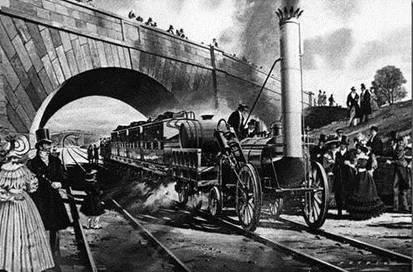
Stephenson's Rocket that won the Rainhill Trials in 1829
In October 1829, Robert Stephenson, the father of train, designed his Rocket and built it at the Forth Street Works of his company in Newcastle upon Tyne. Stephenson's Rocket won the Rainhill Trials held by the Liverpool & Manchester Railway in 1829 to choose the best design to power the railway with its 0-2-2 wheel arrangement. It is the most famous example of an evolving design of locomotives by Stephenson that became the template for most steam engines in the following 150 years. The locomotive was preserved and is now on display in the Science Museum in London.
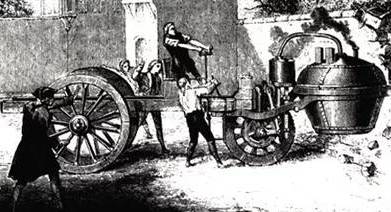
Nicolas-Joseph Cugnot’s Steam Car
The experiment of steam engine on the road was actually earlier than on the railway. In 1769, the French engineer and army officer Nicolas-Joseph Cugnotmade a tricycle steam car that is still in the museum of Paris. Trevithic’s steam car built in 1803 was also copied and traveled around Europe not long ago, and the sales of Stanley steamed cars were still ahead of the gasoline car in 1905. It is pitiful and yet natural that steam car lost the ground. It is unfit, after all, for a steam engine to travel on the dust road burning a large pot of boiling water.
